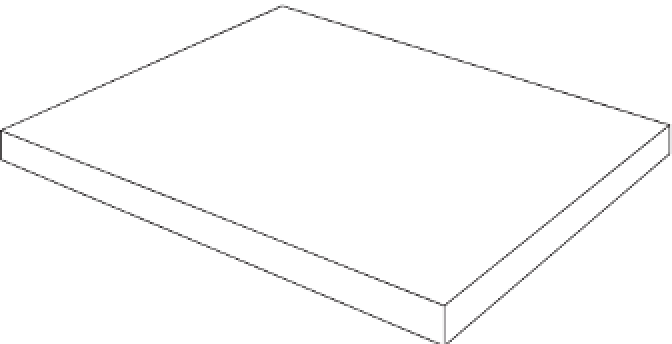Geology Reference
In-Depth Information
already in the air. The Bernoulli effect arises from the fact
that wind speed increases swiftly away from the ground
surface, so that a surface particle sits in a pressure gradi-
ent, the top of the particle experiencing a lower pressure
than the bottom of the particle. The Bernoulli effect
is boosted where airflow accelerates around protrud-
ing objects. However, the most effective mechanism
for getting particles airborne is bombardment by par-
ticles already in flight. So the movement of particles
is slow when a wind starts, as only lift is operative,
but it picks up by leaps and bounds once saltation and
associated bombardment come into play.
Wind transport encompasses four processes -
saltation, reptation, suspension, and creep (Figure 3.17):
great distances. Sand particles may be lifted into the
lower layers of the atmosphere, as in sandstorms, but
will fall out near the point of takeoff. Dust particles
may be carried around the globe. Dust storms may
carry 100 million tonnes of material for thousands
of kilometres. A dramatic dust storm, which car-
ried an estimated 2 million tonnes of dust, engulfed
Melbourne, Australia, on 8 February 1983 (Raupach
et al
. 1994).
4
Creep
and related near-surface activity. Coarse sand
and small pebbles inch forward by rolling and slid-
ing with the momentum gained from the impact
of jumping sand particles and down the tiny crater-
slopes produced by an impacting particle.
1
Saltation
. Sand grains bound, land, and rebound,
imparting renewed impetus to other sand grains.
Such motion is confined to short distances and
heights of about 2 m.
2
Reptation
. On hitting the surface, saltating grains
release a small splash-like shower of particles that
make small hops from the point of impact. This
process is reptation.
It should be stressed that saltation is the key process.
Once saltation cuts in, it powers all the other processes,
especially creep and reptation. Even the entrainment of
fine particles destined to become suspended is mainly
induced by jumping grains.
The dividing line between saltation and suspension
appears to lie at about particles of 100 micrometres
diameter. Particles smaller than 100 micrometres have
fall velocities lower than the upward velocity of the tur-
bulent wind and so stay in the air until the wind abates,
3
Suspension
. Particles of silt and clay lifted into the
atmosphere become suspended and may be carried
Outgoing
saltating grain
Suspension
Incoming
saltating grain
Creep
Reptation
Approach
angle
Creep
Figure 3.17
Modes of grain transport by wind.
Source:
Adapted from Livingstone and Warren (1996, 13)




















































